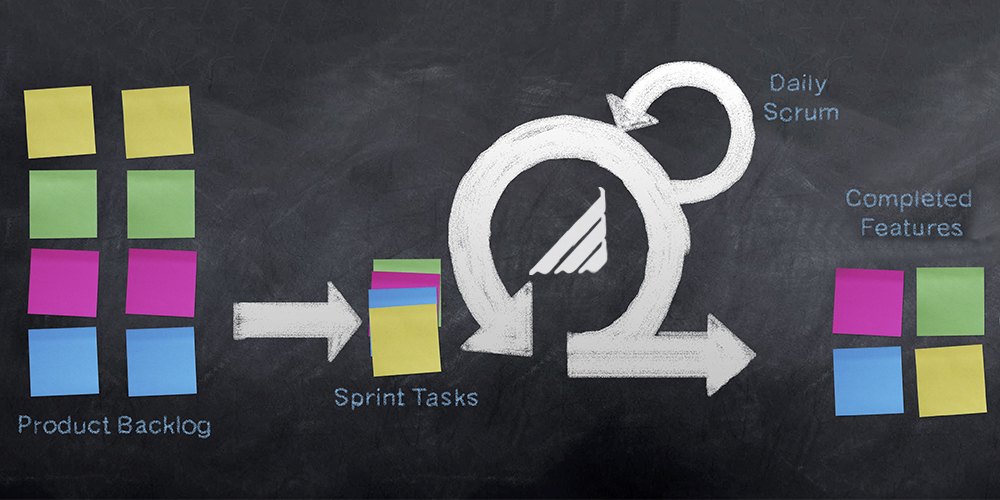
Fixed Budget and Flexible Scope
= Predictable Software
How agile development ensures quicker time-to-value and stronger team collaboration
When I buy a product, I want to know what I’m getting for my money. For instance, when I go to a taco truck and present a $5 bill, I know I’m going to get a taco. I pick from the menu and can anticipate the quality, ingredients, and other aspects of the taco. I also know that I’ll have to pay extra for avocado and more toppings.
Buying services has traditionally been less straightforward. The classic buying scenario has followed the lines of:
- Client tells Services Team high level project requirements at varying levels of priority and detail.
- Client needs a quote and firm set of deliverables in order to budget and get approvals on the project.
- Due to the number of unknowns and assumptions needed to provide a quote, the Services Team cannot provide price with confidence, so they add in padding to account for the risk that comes with the unknowns of the Client’s environment.
- Sometimes the Client will accept this price, other times not.
Assuming the Client agrees to the price, the Services Team must now be hyper vigilant about calling out what is additional scope at every step along the way. This can lead to a tumultuous relationship of being at-odds instead of having a shared goal, and the client feeling nickel and dimed throughout. This in turn, puts pressure on internal project sponsors, who must keep going back to the well (their CFO) to increase the budget. Certainly not a smooth journey for either party.
It doesn’t have to be this way! We all need to know and collectively agree on this fact. When it comes to Service Delivery, leveraging Agile methodology may seem at odds with the classic fixed price, fixed scope pricing model typically seen in waterfall projects. But here’s why it works:
- Customer Needs Change: Customer’s needs, priorities and perception of value will continually evolve for a variety of reasons (competition, technology, etc.) Therefore, not collecting their feedback and turning it into new or adapted feature sets, is a mistake. The majority of businesses that deliver world class Products and Services use customer feedback as a key input. Organizations and Teams that can adapt the quickest to the customers’ needs will win in the 21st century.
- Business Environments Change: The needs of your business today will change from what they will be in a week, a month, a year and beyond. Why try to predict and box yourself and your Services partner into a set of features/functionality that constrains you against what you will need in the future? No one has a crystal ball. Release in small increments and collect feedback along the way from your Users. Use this input to change your priorities and build the next iteration. To maximize success, have a contract in place that supports this type of delivery model.
The Future: Projects priced according to fixed budget, flexible scope!
One Agile concept that has proven its results in helping to price a project and predict cost and value is called Continuous Improvement. The intent is the following:
- Predictable Budget – Define a fixed budget up front, but be able to flex scope within that budget as the priorities of the business and your users evolve throughout the project.
- Deliver Value on Time – Receive working software at set, regular intervals of time, also known as sprints or iterations
- Embrace Change – Agile enables the Client to change priorities as needed. They decide what to work on for each sprint based on what will yield the highest business outcome and ensure quicker adoption and buy in from constituents.
- Outcome Based – When the pricing is based on outcome, value is realized faster and is more meaningful to the end user. It also has a more measurable impact on the business in terms of priority. This model sets up the project sponsors for success, allowing them to prioritize budget based on specific outputs.

This shift of thinking supports a platform that is flexible and allows us to support the goals of the organization without additional risks and a lower Total Cost of Ownership (TCO) of the technology. It is crucial for Clients (and prospective Clients) to understand that value will be added at every single step of their project within the Continuous Improvement model. However, no one can predict up front what a project will look like at each step along the way. Having a fixed budget and flexible scope allows for a Services Team to state to Clients, “We understand and share your goals for the project. We will deliver X sprints worth of value, in X amount of Time and Dollars.”
If you’re still chasing fixed budget, fixed scope, hoping that someday you’ll get exactly what you need for that original budget, without any surprises, you will likely be chasing that dream for a long time.
Setting these expectations upfront aligns both Services Team, Clients, and Users. It helps nurture a collaborative environment where they can brainstorm together and adapt to changes along the way without having to renegotiate changes in scope or priority at every turn. By exceeding Client expectations over time based on outcome and continuously delivering value, we contribute to a more mutually beneficial and profitable relationship.
If you’re still chasing fixed budget, fixed scope, hoping that someday you’ll get exactly what you need for that original budget, without any surprises, you will likely be chasing that dream for a long time. Know that it doesn’t have to be that way. The fixed budget, flexible scope model works, and we encourage you to embrace this modern concept so that you set your business up to be able to achieve the highest value-based outcomes and deliver what your customers need, when they need it.
Following true Agile methodology and best practices must come with strong communication, governance and clearly defined business outcomes. This fosters a more cohesive Client-Services Team environment with all parties contributing to mutual goals and new revenue levels.


